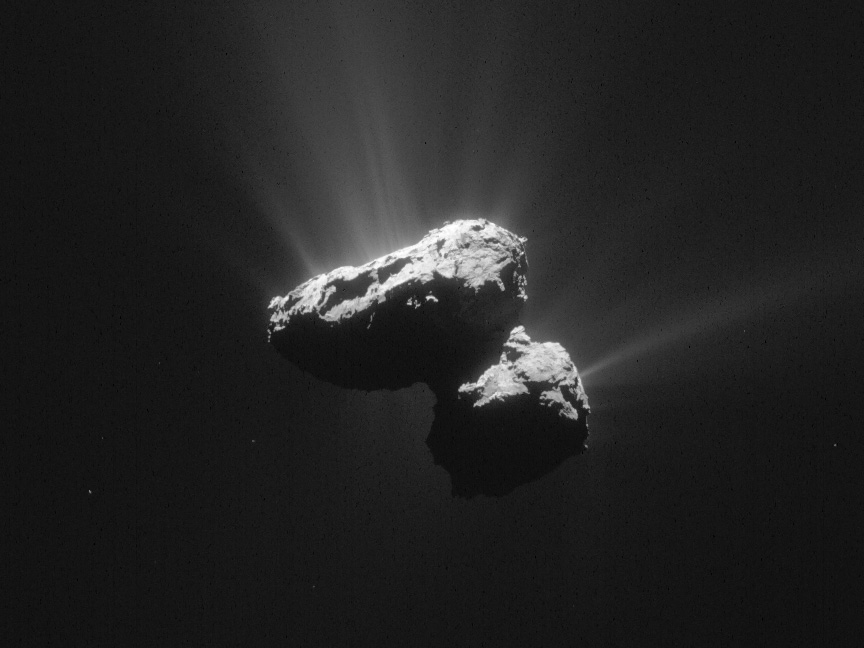

The little spacecraft that couldn’t quite land on a comet has nevertheless sent back a wealth of data. The Philae lander was supposed to become the first spacecraft to touch down on a comet in November, after a 10-year journey, but things didn’t go as expected. The spacecraft bounced away from its original landing site, eventually coming to rest in a dark area near the edge of a crater. Without enough sunlight to charge its solar panels, Philae operated for about 60 hours on battery power, then entered a long hibernation.
Well, it turns out Philae put those 60 hours to good use. Today Science published seven whole papers full of juicy information about Comet 67P. Here are the most important things we learned from the data deluge.
Philae’s landing was actually too soft. Like a sandbox, Philae’s original landing site appears to have been covered in several inches of a powdery dirt, the New York Times notes. The loose material made it hard for the lander’s foot screws to gain purchase. That, combined with the failure of its harpoon system and downward thrusters, meant the lander couldn’t secure itself to the comet’s surface.
Other parts of the comet are not soft at all. Although the comet’s soft dirt may be up to 6.5 feet deep in some places, in other places, like the spot where Philae came to rest, are hard as rock. This isn’t super surprising, because comets tend to be stuck-together balls of rock, dust, and ice. Nevertheless, Philae’s experience could someday help in asteroid mining, as Wired points out.
The comet is sort of like a sponge. Do you ever feel empty inside? Well, Comet 67P does. Philae shot some radio waves through the comet to probe its internal structure, and found that up to 85 percent of its interior is empty. In other words, the comet is full of holes.
It’s rich. In organics, that is. That’s not a super big deal because, really, organics are everywhere these days. The Rosetta orbiter and Philae itself detected organics last year, but the latest results indicate that there are even more organic compounds there than we thought. Philae found 16 in total, including 4 that have never before been detected on a comet. The new findings lend support to the idea that comets could have seeded life on Earth (though there’s no way to say for sure whether that’s what actually happened).
Not bad for a broken lander! And who knows, there may be more to come.
In June, Philae woke up from its 7-month hibernation to say hello. That’s about all it was able to say, because the Rosetta orbiter can’t establish a good enough communication link with Philae to receive all its data. But the scientists haven’t given up yet, and with any luck the situation may change as the comet nears its closest approach to the sun in August.

